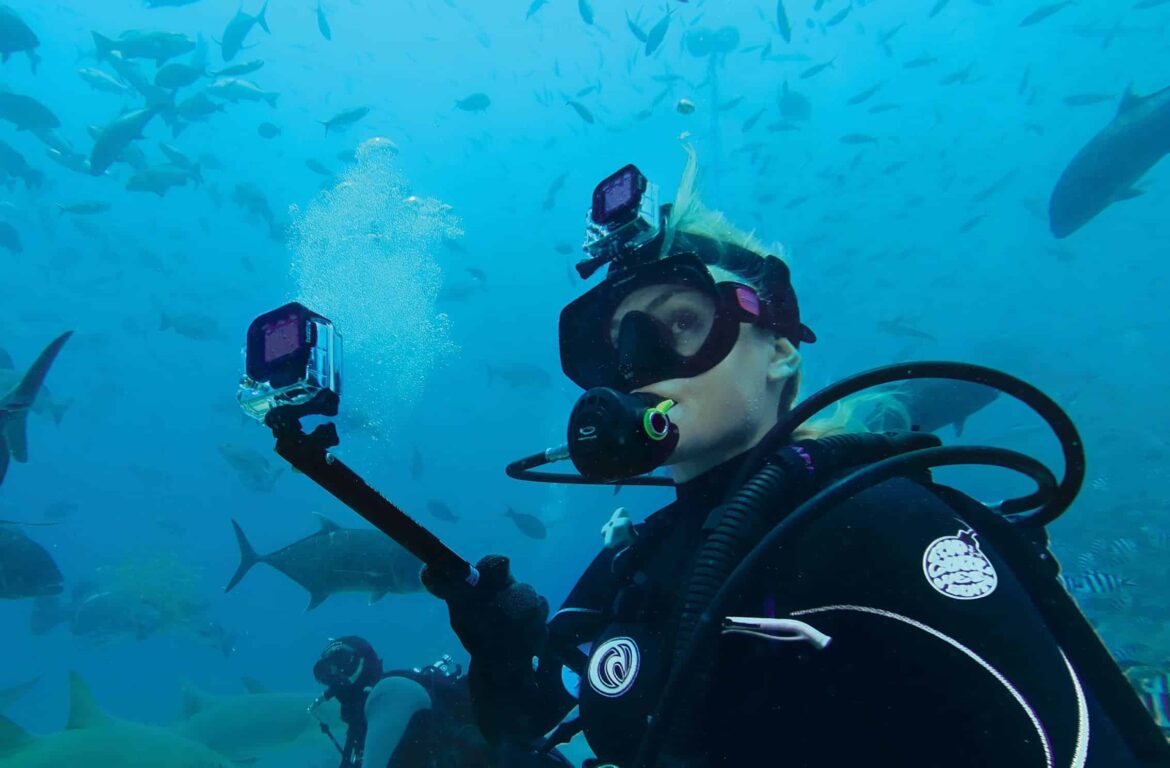1.2K
GoPros are great for diving. However, there are a few things to keep in mind to get great footage
Diving with GoPro: Important information about the dive
GoPros are popular action cameras because of their wide shooting angle and configuration options. If you want to use them for diving, there are certain points to consider:
- The supported water depth of the GoPro should be considered before each dive. Most models are waterproof to depths of five to ten metres. For deeper trips, you’ll need a housing that allows you to dive 30 to 60 metres.
- Depending on the shots you want to take, you will need appropriate accessories. These include head mounts, chest strap fixings, matching telescopic sticks and hand straps. If you are diving for longer periods, spare batteries are recommended. A floating cover ensures that the camera does not sink if it falls out of your hand.
- Further, the settings of the GoPro must be observed to get a good picture quality. It is recommended to use a lower resolution in low light conditions. This prevents intense grain formation.
- Put on high frame rates of 50 or 60 FPS. This will make movements under water appear more fluid. When it comes to FOV, a wide setting is recommended to be able to film more of the underwater worlds.
- Tip: In certain or deep waters, it is recommended to use a colour filter. This will optimise the colour and you won’t have to deal with intensely blue or too green shots.

